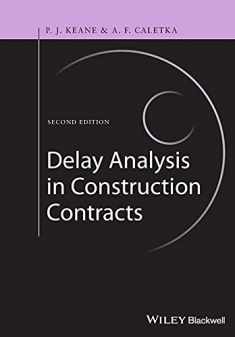
A Practical Guide to Disruption and Productivity Loss on Construction and Engineering Projects
Book details
Summary
Description
Disruption of a construction project is of key concern to the contractor as any delay to the project will involve the contractor in financial loss, unless those losses can be recovered from the employer. It is, however, acknowledged that disruption claims in construction are difficult to prove, usually the result of poor or inaccurate project records, but the cost of lost productivity or reduced efficiency to the contractor under these circumstances is very real.
Practical Guide to Disruption and Productivity Loss on Construction & Engineering Projects is clearly written to explain the key causes of disruption and productivity loss. Disruption claims rest on proof of causation, so it discusses the project records that are necessary to demonstrate the causes of disruption, lost productivity and reduced efficiency in detail. Quantification of a disruption claim in terms of delay to activities and the associated costs are also fully discussed. With many worked examples throughout the text, this will be an essential book for anyone either preparing or assessing a disruption and loss of productivity claims, including architects, contract administrators, project managers and quantity surveyors as well as contractors, contracts consultants and construction lawyers.


We would LOVE it if you could help us and other readers by reviewing the book
Book review




